- Home
- Mark R. Levin
Plunder and Deceit: Big Government's Exploitation of Young People and the Future Page 6
Plunder and Deceit: Big Government's Exploitation of Young People and the Future Read online
Page 6
For starters, the Heritage Foundation estimates that by 2023, Obamacare will add $1.8 trillion to federal health-care spending.32 It also requires individuals to purchase insurance policies (whether they want to or not) and moves other people onto the Medicaid rolls by loosening eligibility requirements and subsidizing the creation of state insurance exchanges. Furthermore, all individuals not already covered by a private employer plan or public program, such as Medicaid, must purchase their own health insurance policy or pay a penalty to the Internal Revenue Service.33 This is the so-called individual mandate.
Although before the law was passed Obama insisted that an individual who liked his existing health insurance policy would be able to keep it, this was a deliberate falsehood. In truth, the law required that all insurance policies offer “essential health benefits” as determined and dictated by the Obama administration.34 Consequently, many existing private policies have been or will be discontinued, severely limiting available health-care options for consumers.
In fact, Obamacare opened the door to infinite future governmental directives and commands covering all aspects of health-care and medical services. For example, the federal government now determines who insurance companies must cover and what benefits they must offer. It prevents insurance companies from denying coverage to people who are already ill or charging higher premiums for those who have greater risk factors. It also puts caps on the out-of-pocket amounts that insurance companies can charge policyholders. These mandates and many more will obviously make it increasingly difficult for insurance companies to remain financially viable. Obamacare’s architects attempted to ameliorate the cost of some of these mandates by forcing younger, healthy individuals to buy insurance they may neither want nor need. Younger people, who, as a group, are healthier and less likely to use health-care services, are subsidizing Obamacare, just as they are subsidizing Medicare and Social Security. Even so, Obamacare is not financially viable. Thus, premiums for private coverage continue to rise appreciably. In 2014, health insurance brokers in the individual and small group markets reported that average annual premiums increased by 11 percent (small group) and 12 percent (individual), with much higher increases in some states: Delaware and California, for example, had 100 percent and 53 percent increases, respectively.35
Obamacare’s advocates also insisted that if passed it would help contain costs. But the experience of Medicare shows otherwise. Massachusetts Institute of Technology (MIT) economist Amy Finkelstein studied the early effects of Medicare on health-care costs and determined that by 1970, within only a few years of its initial passage, it caused a 37 percent increase in hospital spending.36 A major selling point of Obamacare was that once individuals without insurance were finally covered—for example, through Medicaid expansion—they would no longer go to emergency rooms (ERs) for care. ERs are required by federal law to provide care to everyone, regardless of whether a person has insurance or the ability to pay. ERs are also a very expensive way to receive medical treatment. The Robert Wood Johnson Foundation found that the average ER visit costs $580 more than a trip to the doctor’s office.37 Unfortunately, the early results after Obamacare’s passage show a spike in visits to ERs for medical treatment.38 Among the reasons is that although Medicare and Medicaid claim to provide better “access to health insurance,” they cannot guarantee access to a doctor. Not all doctors can afford to keep their practices afloat when Medicare reimburses their services and costs at significantly lower rates. A survey of doctors in 2013 found that only 45.7 percent accepted Medicaid patients.39 This is not a new development. The same survey showed that in the past ten years, the rate has fluctuated between 50 and 55 percent.40 And the situation is getting worse.
The Associated Press reported that “A survey [in 2014] by The Physicians Foundation found that 81 percent of doctors describe themselves as either over-extended or at full capacity, and 44 percent said they planned to cut back on the number of patients they see, retire, work part-time, or close their practice to new patients. At the same time, insurance companies have routinely limited the number of doctors and providers on their plans as a way to cut costs. The result has further restricted some patients’ ability to get appointments quickly.”41
Significantly, Obamacare drains $716 billion from Medicare, mostly from the funds used to reimburse hospitals and private health insurers, thereby further weakening a system that is already teetering on the brink of financial collapse and putting an even tighter squeeze on health-care providers.42
Amazingly, there is a longer-term plan in the works that would drag the rest of the private health-care system under the control of the federal government. In his first months in office, Obama suggested to the New York Times that he did not believe his aging grandmother should have had expensive hip replacement surgery because she did not have much longer to live. He said, “Whether, sort of in the aggregate, society making those decisions to give my grandmother, or everybody else’s aging grandparents or parents, a hip replacement when they’re terminally ill is a sustainable model, is a very difficult question.” This issue was “a huge driver of cost” because “the chronically ill and those toward the end of their lives are accounting for potentially 80 percent of the total health care bill out here.” When asked what could be done, Obama suggested further centralizing medical decisions under yet another federal or federally sponsored committee or bureau of supposed experts:
Well, I think that there is going to have to be a conversation that is guided by doctors, scientists, ethicists. And then there is going to have to be a very difficult democratic conversation that takes place. It is very difficult to imagine the country making those decisions just through the normal political channels. And that’s part of why you have to have some independent group that can give you guidance. It’s not determinative, but I think has to be able to give you some guidance.43 (Italics added)
Obamacare actually created such a group—the so-called Independent Payment Advisory Board (IPAB). The IPAB is a board that will seek “to reduce the per capita rate of growth in Medicare spending” by developing proposals to cut costs.44 Beginning in 2015, in any year that Medicare’s per capita growth rate exceeds the target rate (a formula tied to the growth of the economy), the IPAB would recommend Medicare spending reductions. The IPAB’s proposals become law unless Congress passes a statute containing the same amount of savings. The IPAB will cut payment rates for Medicare providers and suppliers. It will be hard for Congress to ignore the IPAB’s “recommendations” or even disband it. The secretary of HHS must automatically implement the board’s proposals unless Congress affirmatively acts to change them or stop the process. Obamacare provides that the IPAB can only be disbanded by a three-fifths vote of the members of Congress. Given the filibuster rule in the Senate, which essentially requires three-fifths of senators to pass legislation, and the president’s veto authority, which requires two-thirds of the members of Congress to override, there is little doubt that the overwhelming majority of the IPAB’s decisions will be irreversible despite the misleading implication that Congress will have the final word.
There is also no doubt that major market-oriented reforms and overhauls are required immediately to address unsustainable federal health-care entitlements and avoid the devastating economic and societal consequences awaiting younger people and future generations from decades of extravagance, political manipulation, and rampant bureaucratic intervention in the private health-care system. But rather than disentangle from the federal Leviathan, the recent imposition of Obamacare demonstrates that ideology trumps rationality and the statists’ impulse for even more coercive and disastrous designs are never quenched.
As the late philosopher, economist, and Nobel laureate Friedrich Hayek wrote in The Road to Serfdom, “The state should confine itself to establishing rules applying to general types of situations and should allow the individuals freedom in everything which depends on the circumstances of time and place, because only the individuals concerne
d in each instance can fully know these circumstances and adapt their actions to them. If the individuals are able to use their knowledge effectively in making plans, they must be able to predict actions of the state which may affect these plans. But if the actions of the state are to be predictable, they must be determined by rules fixed independently of the concrete circumstances which can be neither foreseen nor taken into account beforehand; and the particular effects of such actions will be unpredictable. If, on the other hand, the state were to direct the individual’s actions so as to achieve particular ends, its actions would have to be decided on the basis of the full circumstances of the moment and would therefore be unpredictable. Hence the familiar fact that the more the state ‘plans,’ the more difficult planning becomes for the individual.”45 (Italics in original)
The combination of runaway government-induced costs and the accompanying tightening and concentration of federal bureaucratic control over the most intimate decisions about an individual’s health, and the exacerbation of these conditions as time goes on, plus the deleterious effects such a Rube Goldberg apparatus with labyrinthine rules and regulations have on the quality and timeliness of medical services, augur very poorly for the health, wealth, and overall well-being of younger people and future generations.
FIVE
* * *
ON EDUCATION
EDUCATION IS SUPPOSED TO be about the improvement and well-being of the next generation. Learning is supposed to be about seeking and discovering the truth by pursuing evidence and knowledge and applying intelligence, experience, and reason to issues and problem-solving. Unfortunately, the rising generation is the victim of an exceedingly expensive and inferior public education, too often driven by statist ideology and objectives, academic fads and social experimentation, and administrative and bureaucratic empire building.
In fiscal year 2012, the Census Bureau reports that federal, state, and local governments cumulatively spent more than $600 billion, or an average of $10,608 per student per year, on public education. The range of spending spanned from $19,552 per pupil in New York State to $6,206 per student in Utah.1 And these figures are off slightly from the high-water marks in 2010, when the country spent $12,743 per student per year, kindergarten through twelfth grade.2 Also in 2012, of the $600 billion, public elementary and secondary school systems spent nearly $420 billion on salaries, wages, and benefits, over $39 billion on capital outlays, plus over $406 billion on accumulated debt.3
Respecting public school teacher compensation, Andrew G. Biggs, a resident scholar at the American Enterprise Institute (AEI), and Jason Richwine, a senior policy analyst in the Center for Data Analysis at the Heritage Foundation, undertook a comparative analysis study of teacher and nonteacher compensation in 2011 and concluded that “public-school teacher salaries are comparable to those paid to similarly skilled private sector workers, but that more generous fringe benefits for public-school teachers, including greater job security, make total compensation 52 percent greater than fair market levels, equivalent to more than $120 billion in overcharges to taxpayers each year.” Apart from overall school system debt, in 2014 the National Council on Teacher Quality reported that state teacher pension systems had a total of $499 billion in unfunded liabilities, an increase of $100 billion in just two years.4
Spending levels on kindergarten to twelfth-grade public education are even more striking when compared with those of other developed “first world” nations on the international stage. According to the Organization for Economic Cooperation and Development (OECD), only Luxembourg and Norway spend more per child than the United States, and Luxembourg’s spending is skewed because of its status as an international financial center with a very small national population. All other countries the OECD surveyed spend dramatically less than the United States.5
Despite the enormous and unparalleled costs, America’s public schools are performing poorly and many are failing. The Program for International Student Assessment (PISA) is an international organization affiliated with the OECD that periodically administers standardized proficiency tests to fourth graders and fifteen-year-olds in schools in sixty-five countries. These results are analyzed and made available to participating countries for near- and long-term education budgeting and planning. The PISA 2012 results were published recently, and they point to a failing American educational system. In math literacy, only 9 percent of American fifteen-year olds finished in the top ranks of proficiency (level 5 or above, out of six levels). This is a lower percentage of top performers than their opposite numbers in 27 countries. It is also a higher share than students in 22 nations, roughly equivalent to those in 13 more nations, and lower than the average score developed by the OECD of 13 percent of students in the top-performing category.6 Twenty-six percent of students scored at the level 2 or lower, which PISA established as the lowest passing level of proficiency for the testing continuum. The average score was 23 percent. Students in 26 nations scored higher and in 29 nations finished with lower scores. Nine nations basically tied with the proficiency level in the United States. The average test score of American students was 481, also below the OECD average score of 494. Again, this was lower than 29 nations and higher than 26 others.7
Only 7 percent of American fifteen-year-olds scored in the top levels of science proficiency, which was close to the average of 8 percent—lower than 167 education systems and higher than only 27.8 Eighteen percent of American students finished at level 2 or below—better than only 21 education systems and worse than 29 systems. The results were similar for reading proficiency.9
The standardized Scholastic Aptitude Tests (SAT) for 2013 paint an equally grim picture. Only 43 percent of the 1.66 million students who took the test scored high enough to be classified as “college ready.” What is worse, this is the fifth year in a row that fewer than half of the young people who took the test scored above 1550, the threshold for demonstrating the capability to maintain a grade point average (GPA) of B-minus or better in a four-year degree college or university.10
According to the United States Department of Education (DOE), the 2013 National Assessment of Educational Progress (NAEP)11 reports that only 26 percent of the nation’s twelfth graders are proficient in math and only 38 percent are proficient in reading. There is also a twenty-nine percentage point gap between the reading proficiency of white and black twelfth-grade students. And these numbers are unchanged since 2009.12
Even the Armed Services Vocational Battery, which is a group of tests given to determine whether servicemen who want to join a Special Forces unit are minimally qualified, reveals serious educational problems. Sixty-six percent of all applicants fail to meet the minimum educational standards on the tests. Eighty-six percent of African-American applicants and 79 percent of Hispanic applicants fail.13
In plain English, the immense investment of tax dollars in a vast government-run educational infrastructure is buying young people a poor education. The data demonstrate there is no overall correlation between the dramatic spending increases in public education during the last several decades and academic achievement. Indeed, in 2014, Andrew Coulson, director of the Cato Institute’s Center for Educational Freedom, examined this precise point. He undertook a careful study that, as he explains, “adjusts state SAT [Scholastic Aptitude Test] score averages for factors such as participation rate and student demographics, which are known to affect outcomes, then validates the results against recent state-level National Assessment of Educational Progress (NAEP) test scores. This produces continuous, state-representative estimated SAT score trends reaching back to 1972. The present paper charts these trends against both inflation-adjusted per-pupil spending and the raw, unadjusted SAT results, providing an unprecedented perspective on American education inputs and outcomes over the past 40 years.”14
Coulson concluded that “In general, the findings are not encouraging. Adjusted state SAT scores have declined by an average of 3 percent. This echoes the picture of stagnating achievement
among American 17-year-olds painted by the Long Term Trends portion of the National Assessment of Educational Progress, a series of tests administered to a nationally representative sample of students since 1970. That disappointing record comes despite a more than doubling in inflation-adjusted per pupil public-school spending over the same period (the average state spending increase was 120 percent). Consistent with those patterns, there has been essentially no correlation between what states have spent on education and their measured academic outcomes. In other words, America’s educational productivity appears to have collapsed, at least as measured by the NAEP and the SAT.”15
As well, the nature of the teaching profession has fundamentally transformed. Since the 1960s the nation’s two largest teachers’ unions, the National Education Association (NEA) and the American Federation of Teachers (AFT), have become enormously powerful political forces, aligning almost exclusively with the Democratic Party.16 In exchange for supporting laws and policies that empower these unions, the union leaders have succeeded in securing from elected politicians privileges and benefits for teachers that too often are not in the best interests of the students or the community. For example, while there are undoubtedly many excellent teachers in school districts throughout the nation, the NEA and AFT have aggressively opposed serious and enforceable standards of merit and competency for their members, making accountability in the classroom nearly impossible, while steadfastly defending tenure and poorly performing teachers.17 The late, longtime president of the AFT, Albert Shanker, once admitted that “In our system, we have a large number of teachers who have not reached even very low levels of literacy and numeracy.”18

 The Liberty Amendments: Restoring the American Republic
The Liberty Amendments: Restoring the American Republic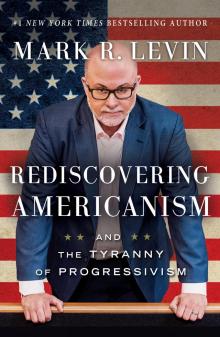 Rediscovering Americanism: And the Tyranny of Progressivism
Rediscovering Americanism: And the Tyranny of Progressivism Plunder and Deceit: Big Government's Exploitation of Young People and the Future
Plunder and Deceit: Big Government's Exploitation of Young People and the Future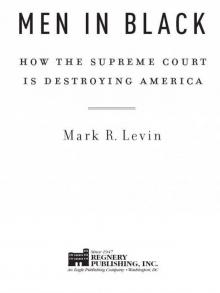 Men in Black: How Judges Are Destroying America
Men in Black: How Judges Are Destroying America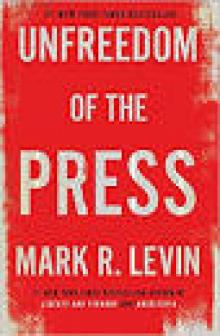 Unfreedom of the Press
Unfreedom of the Press Ameritopia: The Unmaking of America
Ameritopia: The Unmaking of America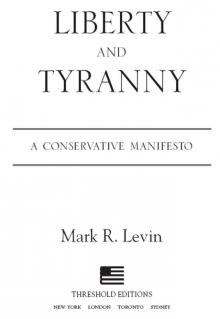 Liberty and Tyranny
Liberty and Tyranny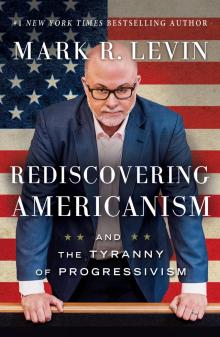 Rediscovering Americanism
Rediscovering Americanism Ameritopia
Ameritopia Plunder and Deceit
Plunder and Deceit